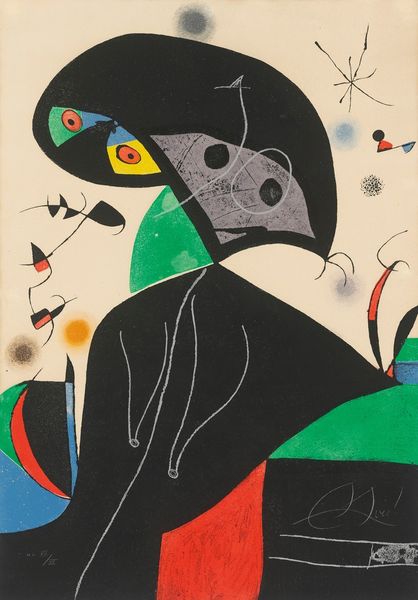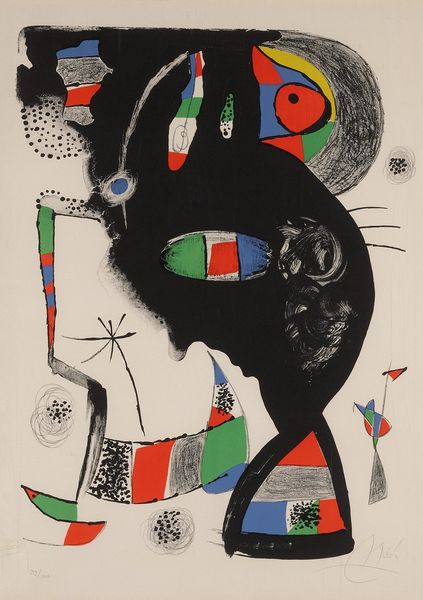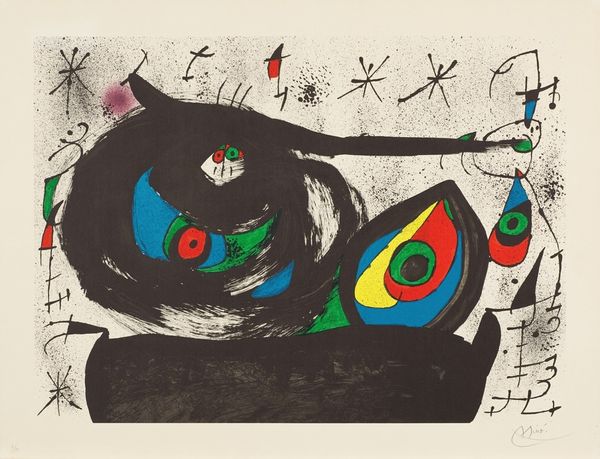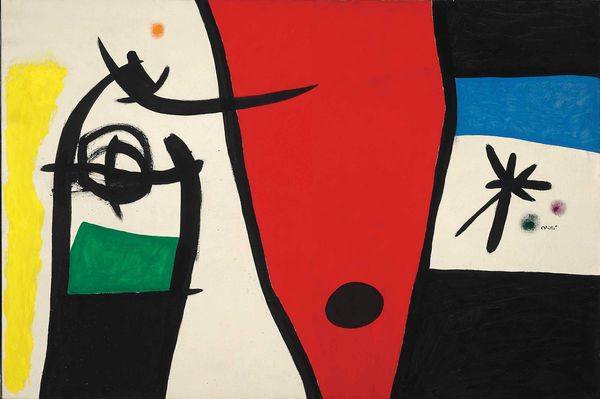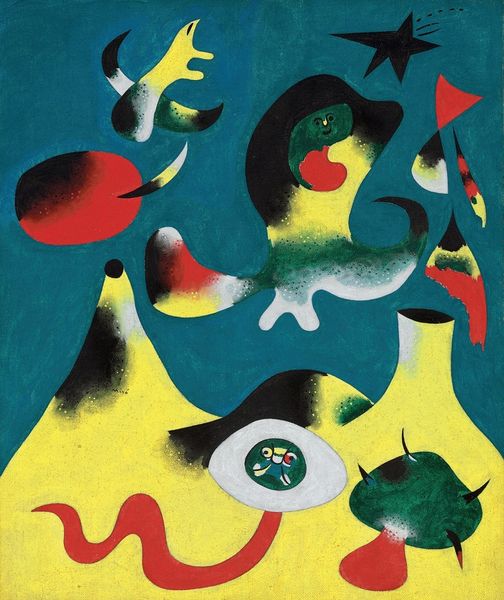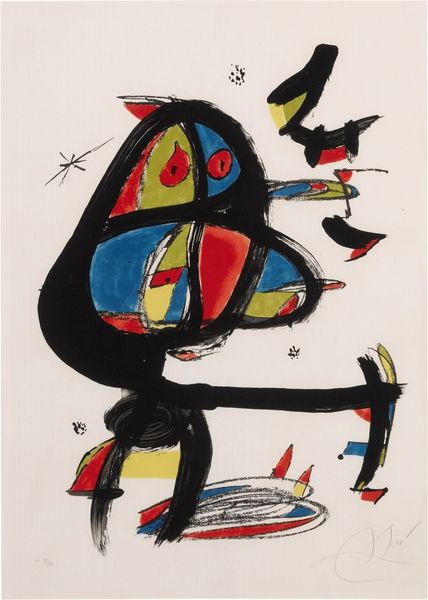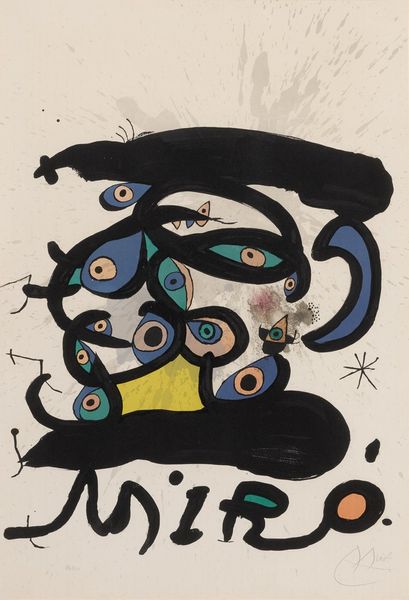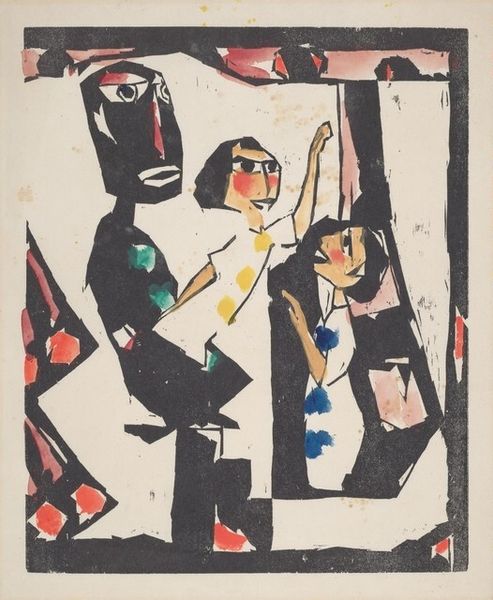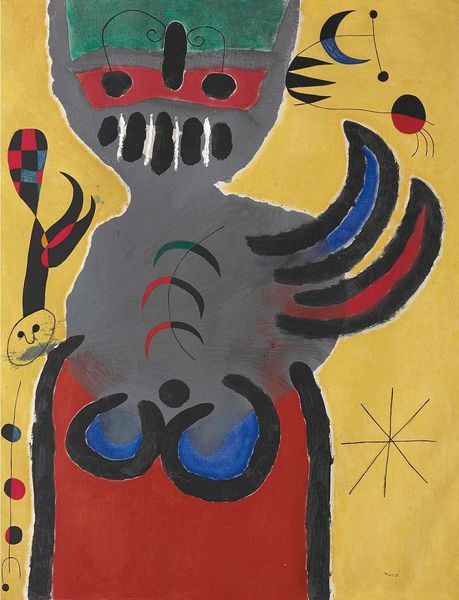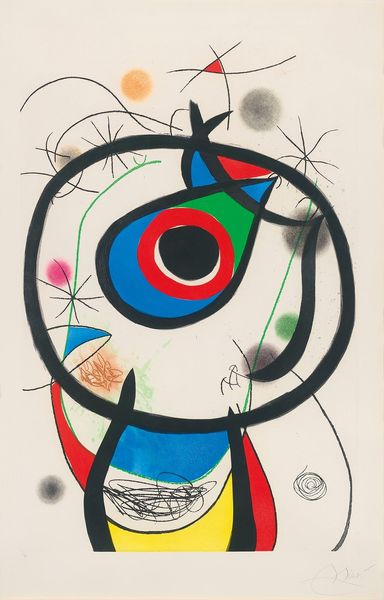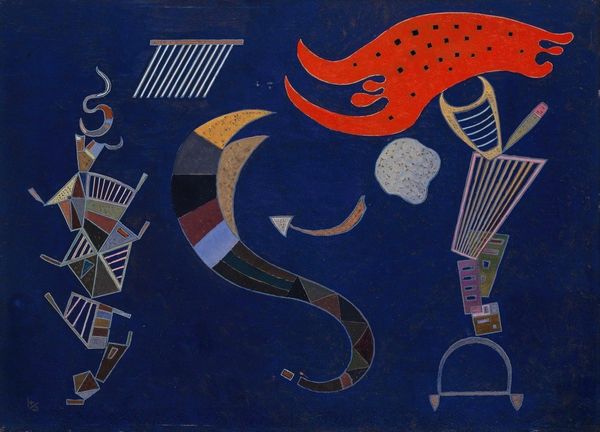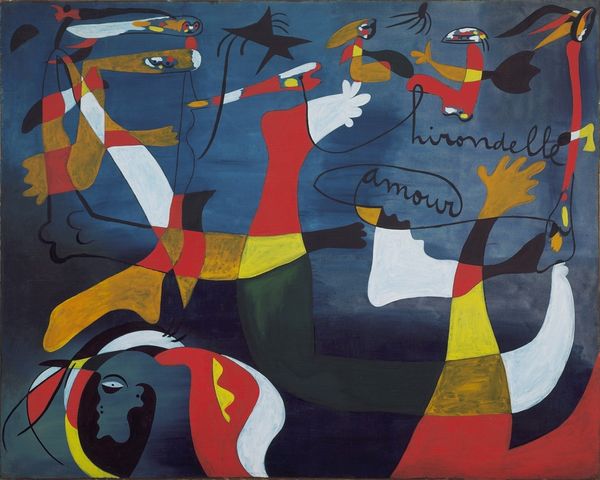
Copyright: Modern Artists: Artvee
Curator: Good morning. Let's pause here to appreciate Joan Miró's "Gaudí XVII," a mixed-media print from 1979. I always get such a kick out of Miro. He creates this childlike glee for creation... what are your initial impressions of this piece? Editor: My first thought goes to a hidden, internal landscape—a dream, maybe even a Freudian slip. The contrast is intense: dark shapes floating against a light, ethereal background, a little bit otherworldly. Curator: Oh, "Freudian slip"… tell me more! I do find a deeply personal and imaginative reflection in his work, particularly in the juxtaposition of these surreal, abstract figures. Editor: Absolutely! Look at how Miró employs symbolic imagery to suggest inner turmoil. The large black form with that striking eye staring back is confrontational and introspective, representing hidden emotions, almost as if this organic geometric image serves as a vessel, containing unspoken feelings. Curator: He dances on a liminal space between dreams and waking consciousness, doesn’t he? In terms of colour field painting, how much can colour alone become an object for reverie? Editor: Exactly! Think of those primary colors: the stark reds, blues, and yellows create a vibrant tension—a visual clash embodying psychological conflict. Color for Miro is rarely merely descriptive. Curator: A kind of internal weather, maybe? It feels like a world within a world! How would you relate those hidden spaces of self and cosmos? Editor: The subtle use of organic shapes, even with hard, geometric ones, mimics patterns we see in the natural world, tying personal anxieties to broader, existential themes of being… this helps access collective memory and deep psychological responses. And then he disrupts that with complete flatness... like theatre flats, or cut outs! Curator: Yes! There's an unsettling tension as familiar geometric forms intersect with primal forms, inviting each of us to project our own narratives and meaning into the space. For me, it opens portals into parts of my psyche and collective memory that might best remain submerged... Editor: Isn't it magnificent how Miró makes a deeply personal, almost unsettling dialogue between what's seen and unseen? He pushes our own psychic boundaries in the act of merely seeing! Curator: Indeed. Miró captures something about the human condition that continues to challenge and intrigue. Editor: He makes me rethink what I see. An unsettling revelation is better than no revelation.
Comments
No comments
Be the first to comment and join the conversation on the ultimate creative platform.
